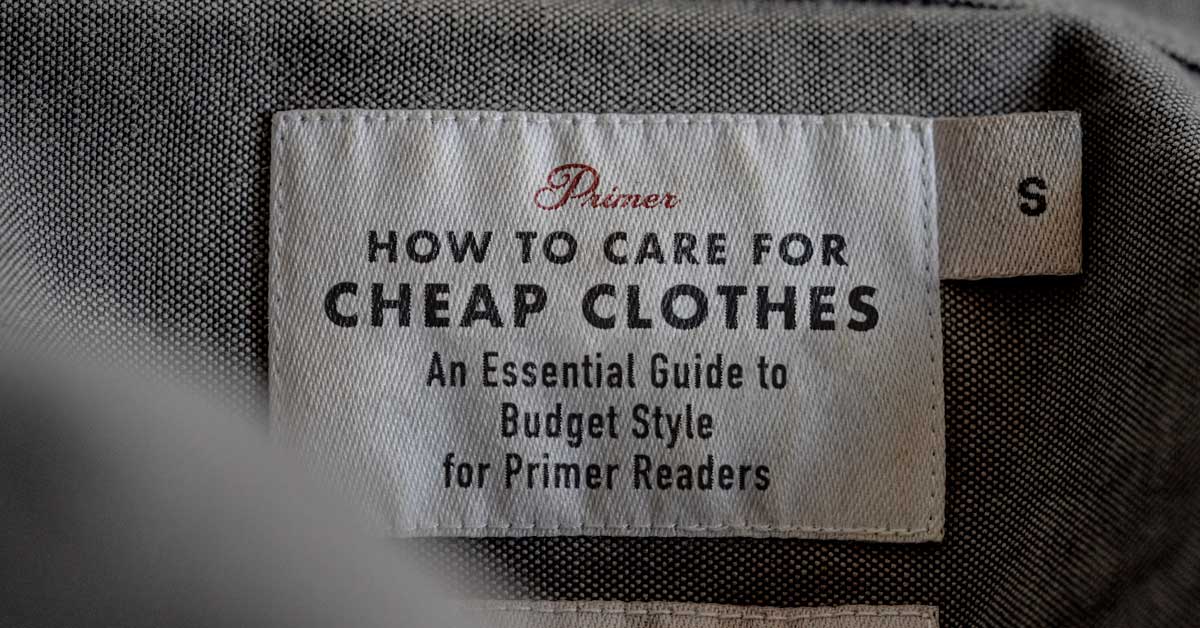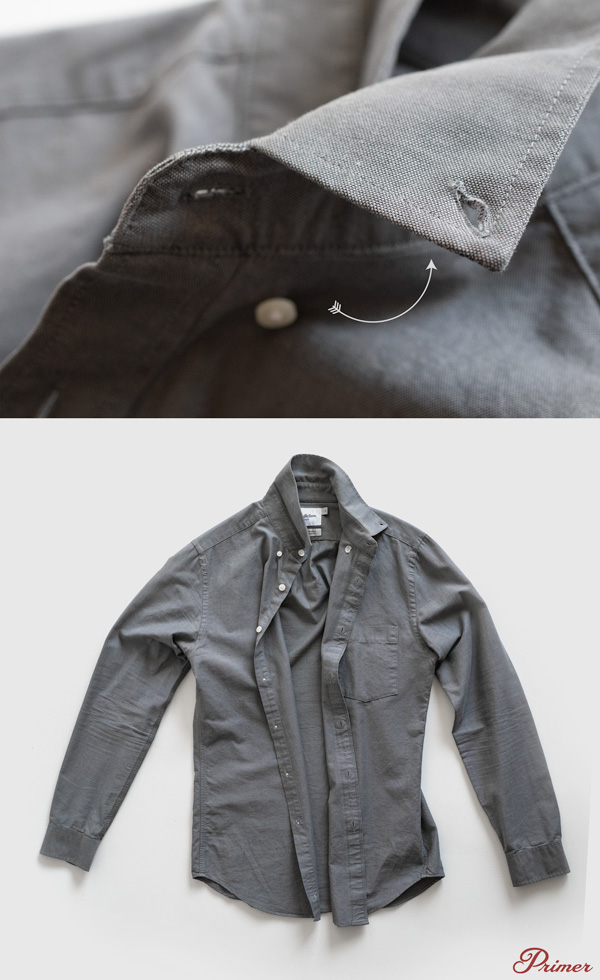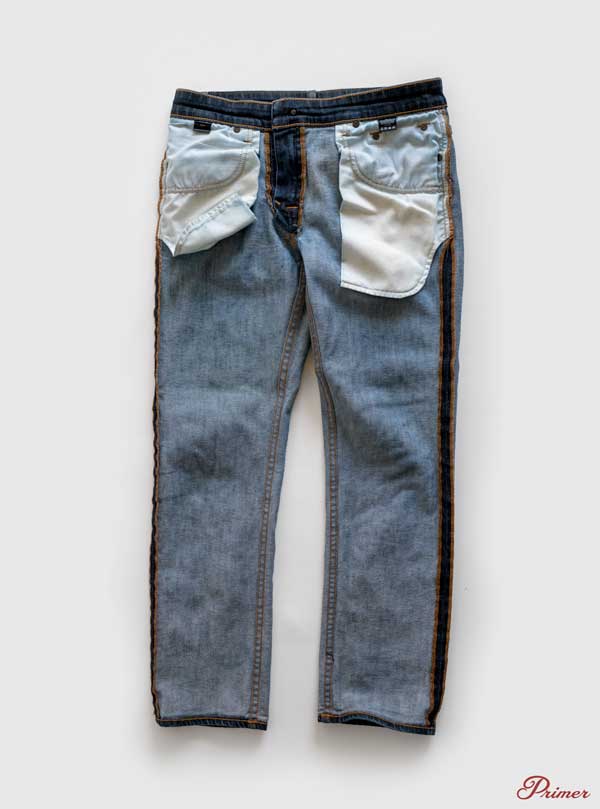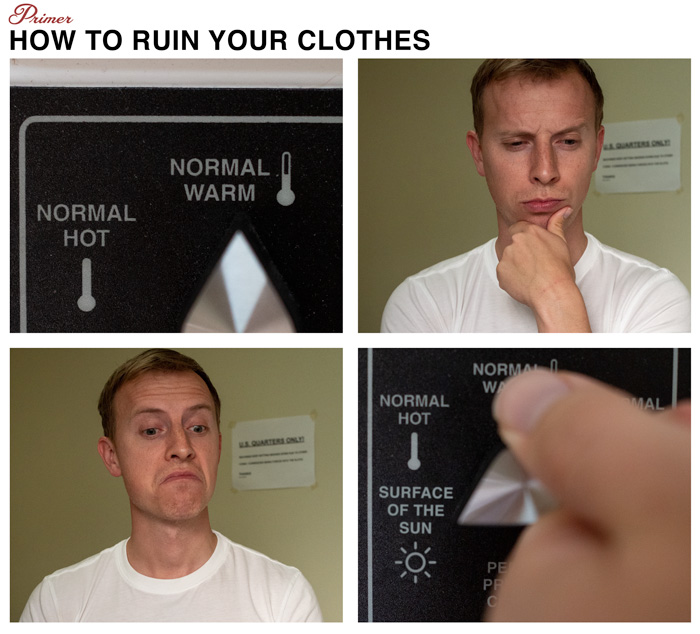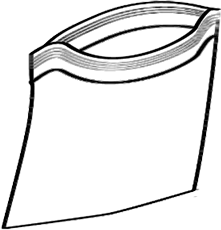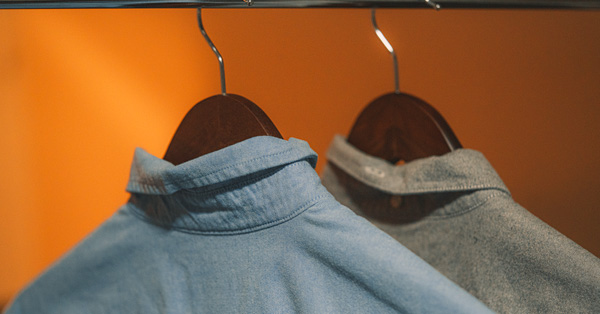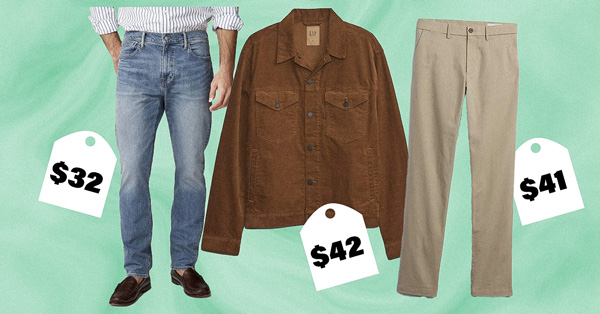Dressing well–and affordably–is one of the pillars that Primer was built on. The number of guys in the world who can purchase bespoke suits is a lot smaller than the number of guys whose closet is primarily Tar-jay, no matter what GQ would lead you to believe. And not only is there nothing wrong with that, it’s actually possible to look as good as the guy in the custom-made suit provided yours is a) well-fitted and b) well cared for.
While it’s true that more expensive clothes can be longer lasting, a lot of the mark-up comes from brand recognition and design exclusivity. (If you’ve ever seen an ad for a $450 T-shirt and wondered, “Is it really 30 times better than that $15 crewneck I’m wearing?” the answer is, “Of course it isn’t.”) Not only that, while more expensive clothes may last a long time, depending on what you need it for and your style habits, you may be over-buying; that is, investing in longevity that you won’t use.
Your budget-friendly garments can look great, for a long time, but it requires a much more intentional care process than even the label will mention. If you’re not willing to do this, you need to understand your cheaper clothing will have a short lifespan; or, you need to recognize you need to invest in higher quality/more expensive options instead.
Fashion is an art form, it’s expensive by nature. But great style is a personal expression that communicates personality, intention, values, and social positioning. That doesn’t require lots of money, it requires understanding. And that’s why Primer has such an emphasis on breaking apart and demystifying great style.
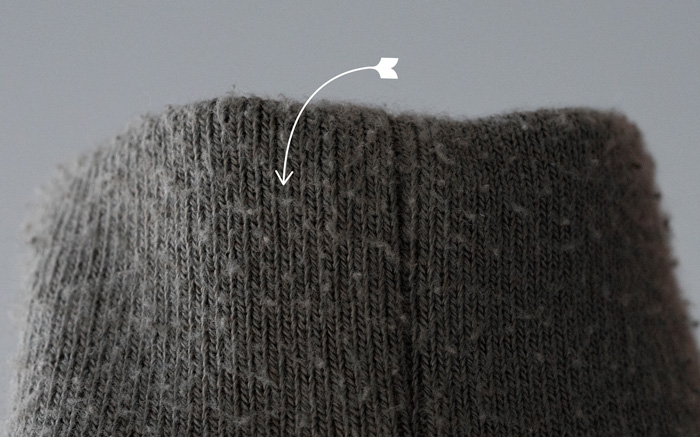
Pilling on a budget sweatshirt
The Functional Trade-Off of Affordable Clothes
The frustrating thing about buying budget fashion items is sometimes they seem to mutate after just the first wash.
They can lose their fit and finish much faster than their more expensive counterparts, and that’s because higher quality fabrics, blends, and construction can withstand more abuse like higher water temps, hotter, more aggressive dryers, hotter irons, and more stretching. All things guys tend to default to when they’re mashing buttons on the machines.
When not cared for intentionally, cheaper clothing will:
- develop shines or lose smooth surfaces
- develop pilling
- shrink and lose shape
- pant knees can permanently stretch
- collars and plackets will bubble and curl
- and so forth.
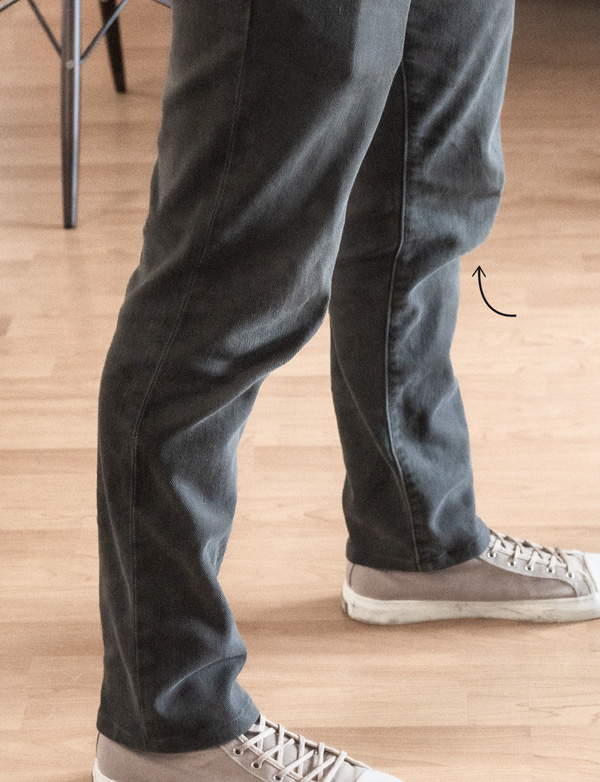
Stretched out knees
Not only that, cheaper clothing requires greater attention to avoid wrinkles. You’ll have to choose whether you want to pull items from the washer or dryer immediately and hang them up right away, or plan on using a steamer on everything. You’ll also have to be mindful of hanging things up right away when you take it off – or it’ll get caught in this still-clean-enough-to-wear but too-wrinkled-to-grab-quickly purgatory.
“Proper care” of a lower-cost item of clothing does require more TLC than the more expensive alternative. You may have to go above and beyond what even the care label says. But once you’re in the habit of properly caring for your clothes, it becomes second nature.
Know Before You Go (to the Laundry Room)
Even before your clothes hit the water, you can give them a longer lease on life before by prepping them properly.
- Unbutton shirts and button down collars to reduce pulling and stretching. This helps garments keep their shape.
- Wash dark denim inside out to preserve color.
- Empty your pockets! No, your mom didn’t pay us to say this.
- Separate items not just by color, but by fabric type. Heavier items (like jeans) should be washed in one load, and more delicate items in another.
Takes a Licking (And Keeps on Wicking)
Nicer clothes can take more abuse. Buttons are sewn on more securely; fabrics are made with higher quality yarns; construction and fit are more precise.
But before you throw all your H&M sweaters out the window, consider this: one of the worst tortures we inflict on our clothing is a uniquely American torment: the clothing dryer.
Many countries around the world air dry their garments, or at least don’t use a “surface of the sun” setting. Once you realize that the way you think you have to care for your clothes is far from the best way to care for your clothes, it’s a little easier to adjust to what you should be doing.
The Fitting Room Rule for Cheap Clothing
If you have a habit of replacing cheap clothes quickly, keep a few things in mind the next time you go clothes shopping:
If it fits *perfectly* in the fitting room, it's probably too small.
All clothes shrink over time. Even “pre-shrunk” styles will have some (less, but still some) shrinkage. A perfectly fitting shirt will shrink just that slight bit too much and end up too small after you wash it.
Fabric fibers are stretched out when they’re processed and made into clothes, and then any type of heat relaxes that tension, making the fibers snap back to their shorter state. The result? A cashmere sweater that will fit only your dog.
That’s called felting shrinkage, which happens when natural fibers like wool are compressed under high moisture and heat. There’s also relaxation shrinkage, which occurs when natural/absorbent fibers (cotton, linen, silk) are exposed to excess moisture, and consolidation shrinkage, which is a combination of stress from moisture, heat, and agitation.
Again, natural fibers are more prone to this type of shrinkage, but that’s not an excuse to buy synthetic fiber garments and run them through the washer/dryer on high heat. There’s no predicting how a garment will shrink (and how dramatically) until it’s too late – especially with budget clothing.
Wash first, tailor later.
If you have a garment taken in or hemmed before you wash and dry it, there’s always a chance it will shrink more in the wash. It’s incredibly frustrating to not be able to wear a shirt you essentially paid to wear twice.
The Don’ts: What NOT to Do
We’re not saying you have to rinse your clothes in a freezing river and gently dab them with moss ethically harvested from a hydroponic moss farm, but you can dial down the temp on your washer and on your iron just a tad. While you’re at it, take some of that money you saved on clothing and get yourself a nice folding garment rack.
How to
Really Care For Cheap(er) Clothing
A Cheatsheet
“But the care label says I can wash this shirt in sulfuric acid and stick it in the oven at 425 to dry it!” Lies. The label and symbols are a “do not exceed,” not a recommendation. To prolong the lifespan of your clothing, always use cold water and air dry or tumble dry whenever possible. The convenience of quickly and easily cleaning and drying the majority of your wardrobe is destroying your clothes. And what do you do when a shirt or a pair of pants gets ruined? You buy new clothes! Which is exactly what Big Garment wants.
From this day forward, here are your cheap clothing commandments:
Don’t get undressed like you were doused in hazardous waste.
Even if you’ve been dying to put on sweatpants all day, take your clothes off (and put them on) gently and carefully. Don’t yank your shirt off by the collar. Pull sweaters and t-shirts up gently from the hem, and don’t stretch out the sleeves and body as you go. Prep shirts for laundry by unbuttoning the front and collar; turn dark denim inside out.
Wash in cold water only, despite what the label says.
And don’t overdo it on the detergent – measure it and use the directed amount. Excess soap can get caught in the seams and crannies of clothing and cause colors to fade, and even attract dirt–the opposite of what you want. Plus it builds up in your washing machine.
Tumble dry or air dry only, regardless of what the label says.
Every time you clean out the lint trap, you’re sweeping up all the little bits of fabric that used to be part of your shirts. If you must use the dryer, use it on a lower heat setting and only until items are mostly dry. Then set everything out to air dry the rest of the way. This way the heat is only evaporating moisture, instead of baking dry fabric. This also massively reduces wrinkles.
Hanging an item to dry can cause it to stretch out, especially if it’s a looser weave or a heavier knit. Roll those items gently in a clean towel to remove any excess moisture, then dry flat on something like a garment or a sweater rack (or a clean sheet or towel on your table or bed).
Wash an item only when absolutely necessary.
Don’t just wash it because you wore it briefly, or because you’d rather toss it in the hamper than hang it up. Use a fabric freshening spray to decrease the frequency of washing. Wearing a shirt for 5 hours one evening may get several wears; a shirt you wear to a long day at the office might get one. Of course, your mileage may vary depending on your body type and the climate where you live. If it’s incredibly hot where you live and you sweat a ton (or if you sweat a ton even when it isn’t hot), you may need to wash each item more often. Before we get any comments: this doesn’t refer to socks and underpants; those are wear-it-and-wash-it items.
Here’s a rough guide to wear/wash frequencies:
- Button up shirts: 3-5 wears. Hang them up to let them air out before putting them away.
- Jeans: rarely. Only when they smell or are dirty, about 5-10 wears or once a month. Spot-treat any stains or spills. Wash inside out, tumble dry until mostly dry.
- Sweaters: rarely. Wash to reshape when they’re stretched out, or if they smell. Dry clean if label dictates.
- Underwear and gym wear: after every use. Come on.
- Suits: depends on how often you wear them. If you’ve only got one or two in heavy rotation, you’ll need to get them cleaned more often, like once every month or two. Otherwise, unless they’re smelly or soiled, a couple times a year should be fine. In between cleanings, gently steam with a garment steamer (or even hang them up in the bathroom while you shower, in a pinch) to eliminate wrinkles.
Learn to love the delicates bag.
If you’re like, “WTF is a delicates bag?” you’re not alone. Also called a wash bag, it’s just a fine mesh or net container with a drawstring or zipper closure–a simple but effective tool for preventing your clothes from getting damaged in the washing machine. This would be for anything you suspect can’t take much abuse like a budget knit or sweater or something you are trying to absolutely prolong the life of.
You can use it to keep sleeves and pant legs from tangling themselves in knots, or to protect a knitted garment from getting snagged by a wayward hook or zipper. It’s also a convenient way to keep your socks from getting lost. Wash bags come in a variety of sizes, so you could have your socks in one, your collared shirts in another. Basically, anything you want to have an extra layer of safety can go in a wash bag.
Treat stains immediately.
Don’t let a big blob of ink or tomato sauce “set” into the fabric, if you can help it. Keep a Tide pen or Shout wipes in your messenger bag, stash a spare shirt at work, etc.
Rotation, Rotation, Rotation
Even outside the laundry room, there’s plenty you can do to preserve your clothing. Do you have 3 shirts that you wear and wash constantly, while the rest of your wardrobe gathers dust in the closet? Get rid of garments that are taking up valuable hanger space in favor of more options that you’ll wear regularly. Not things like your special occasion suit, obviously, but if you find that you can’t stand pea green, then why do you have a pea green henley?
We all have a favorite outfit, but the more you wear something, the quicker it gets worn out. Better to have three $10 T-shirts and treat them like a $450 shirt than to have one $450 shirt and treat it like a $10 tee. This goes for jeans, too–regular wear causes the fabric to stretch and soften, especially at the waist and knees. Switching between a few pairs will help them maintain the right shape longer.
Dry Cleaning/Professional Laundering
If you outsource your laundry, talk to the people handling your clothes. There may be a limit to how much they’re willing to humor you, but it’s worth a shot. And while dry cleaning might sound like a better way to get your clothes un-dirty, the chemicals and high temperatures used in the process really aren’t helping the “prolong the lifespan” cause. If you get dress shirts dry cleaned, ask if they can be washed and hand-ironed, rather than machine pressed, which can cause shininess on some cheaper fabrics. And skip the starch, for the love of collar stays!
Bottom (Clothes) Line
If you don’t have the time, patience, energy (etc.) for careful maintenance and upkeep, either accept that your fast-fashion pieces will have a shorter lifespan, or figure out how to upgrade to more high-end brands.
Final Word: What Do All the Laundry Tag Symbols Mean?
They don't do any good if no one knows what they stand for!



